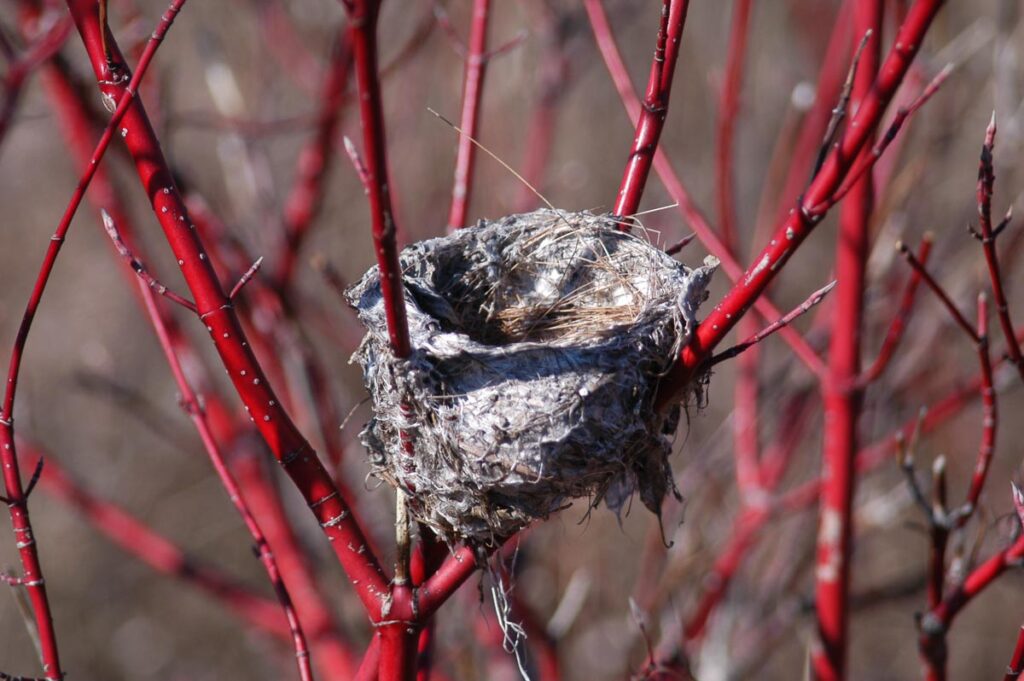
Synonyms: Cornus sericea
Other Name: Red-stemmed Dogwood, Red Dogwood
Wetland Indicator Status: FACW
Several of our native shrubs have a subtle beauty, but none have the year-round color of Red Osier-Dogwood (Cornus stolonifera). It is commonly found coloring Shrub-Carr wetlands, which are essentially natural communities made up of shrubs on wet/saturated soils. It can form thick stands with few other shrubs or trees present. Unfortunately, this shrub, although native, can invade and replace sedge and wet meadows because of fire suppression and water table changes caused by drainage.
Red osier-dogwood had a number of uses for native people. Medicinally it was a common treatment for eye maladies. Berries from Red osier dogwood were eaten raw, or cooked. Dogwood bark was smoked by itself or mixed in with tobacco, or kinnikinnick. The stems were woven into baskets, or fashioned into cooking utensils, arrows, fishing equipment, and pelt stretchers.
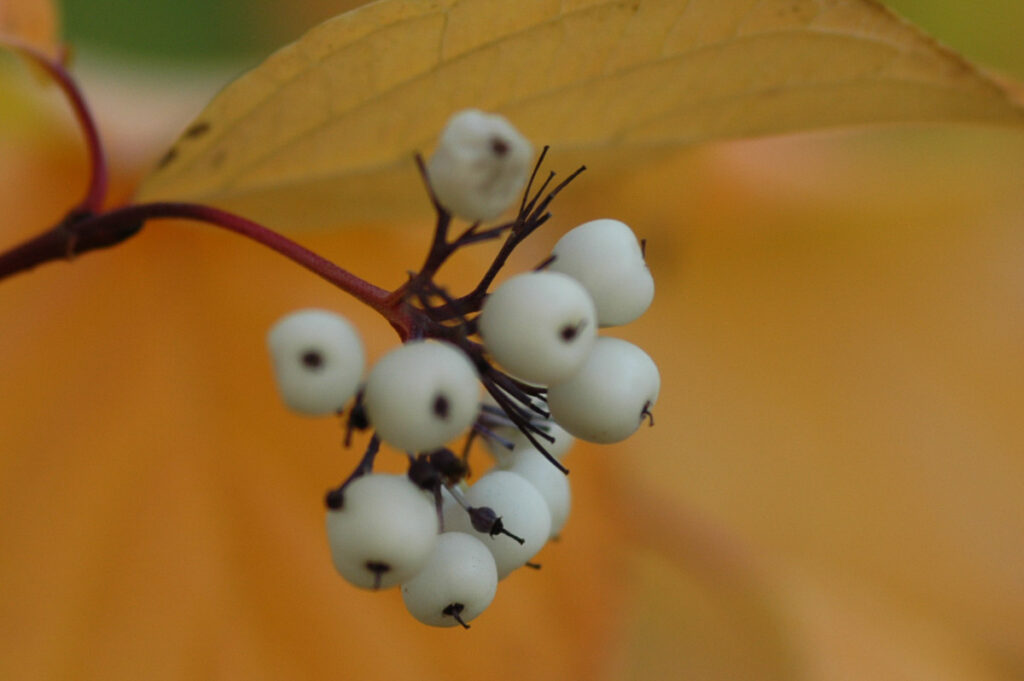
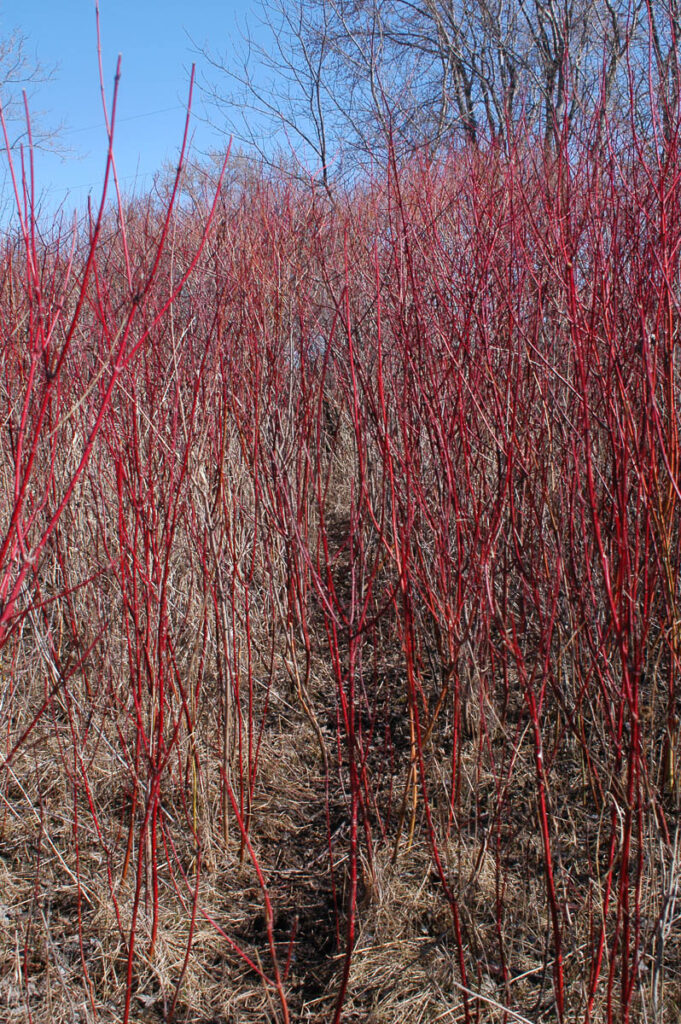
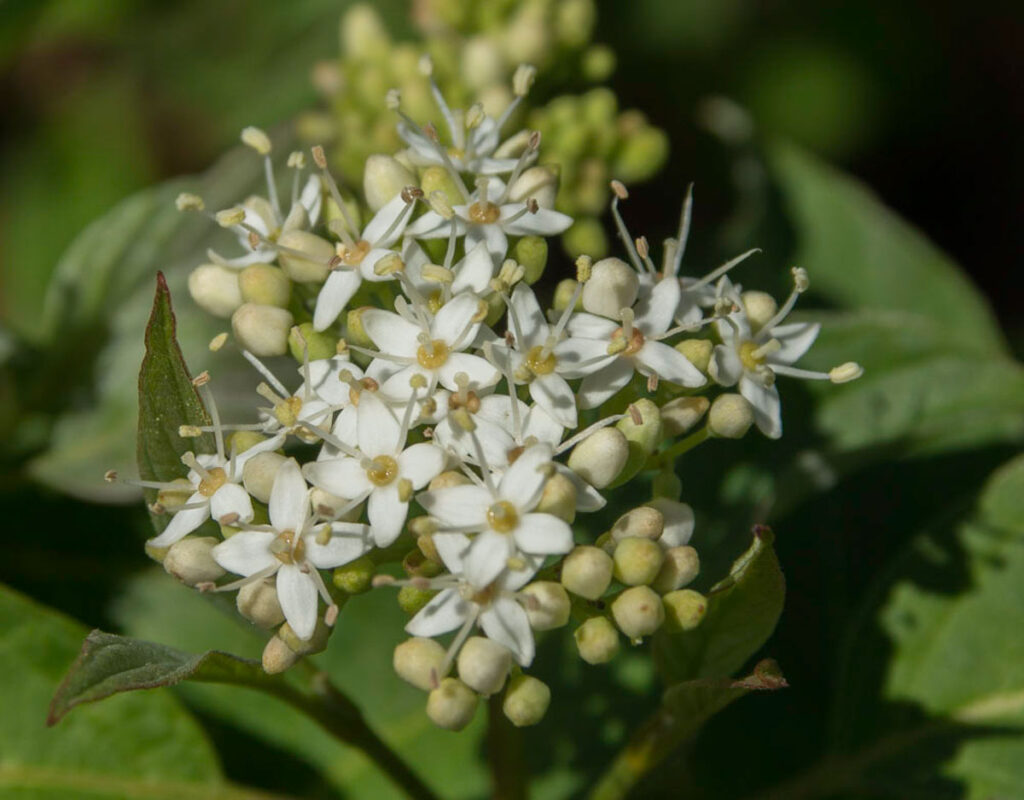
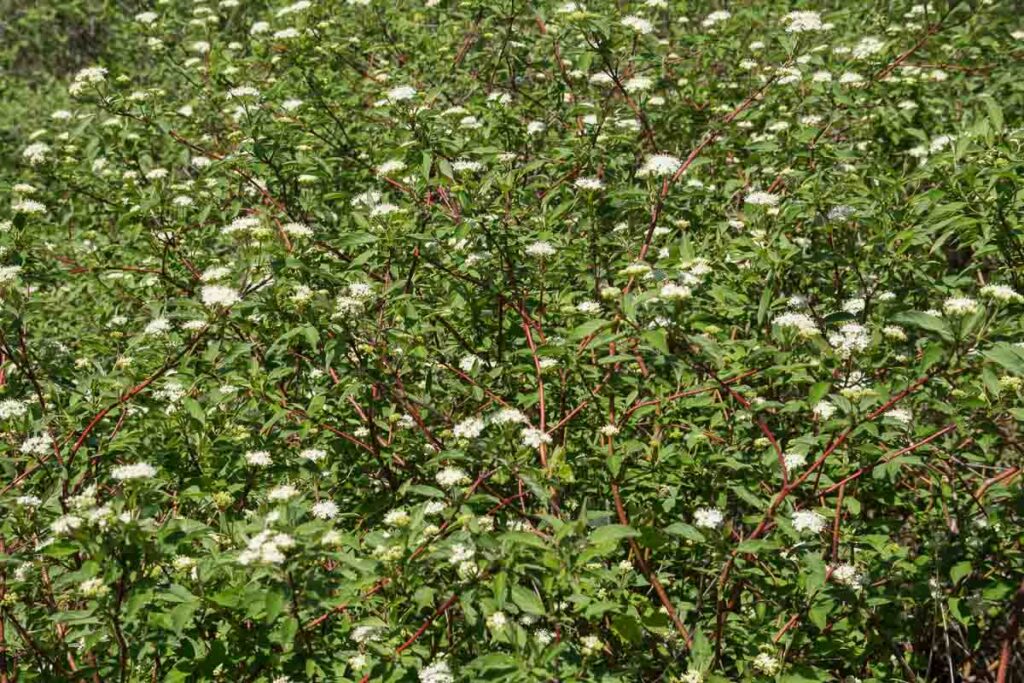
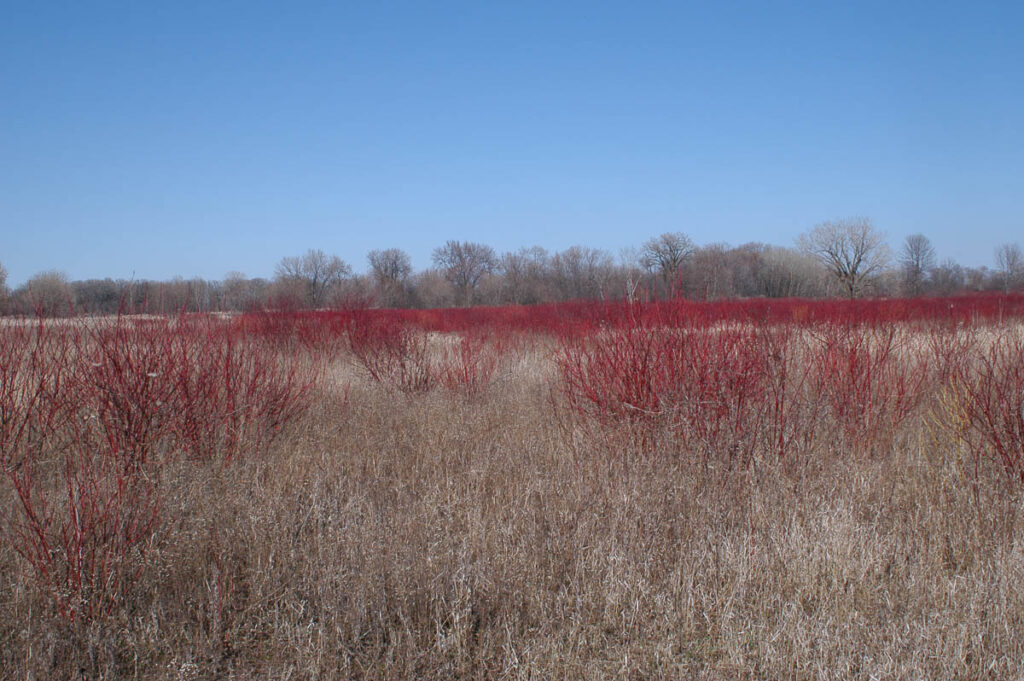
Today Red Osier-Dogwood is used mainly for its ornamental value. The foliage flowers, and fruit are all pleasing to the eye, and the splash of red in the dull winter landscape adds color to gardens. The younger stems are redder than older ones, so to have a more vibrant dogwood, the old stems should be trimmed back, or let the rabbits do it for you.
